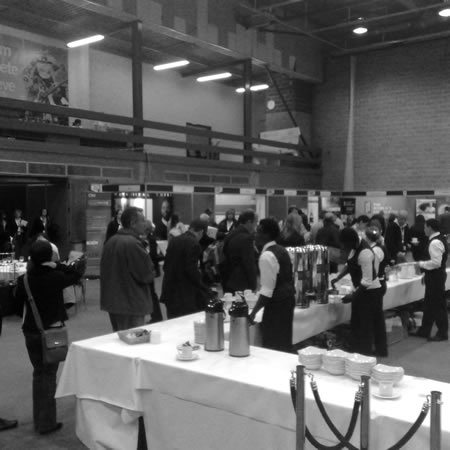Why we can’t bury the VLE just yet…

There are many people out there who believe that the institutional VLE is dead and we should allow learners to use their own PLE (personal learning environment) and/or a selection of Web 2.0 tools and services.
For example Steve Wheeler in Learning with ‘e’s says in a recent blog post on the death of the VLE that:
The institutional VLE is led by the entire institution and is therefore slow to respond to change, whilst the personal web is led by one user. The personal web has one more key advantage – it is owned by the individual who created it.
In another of his blog posts, Steve argues that
I have previously argued that VLEs tend to constrain students into particular ways of thinking and stifle creativity. I also maintain that most proprietary VLEs have been designed by businesses not by teachers, and therefore are unfit for purpose.
To be honest I don’t actually disagree with Steve on principle. I do believe that in order for learning to be accessible and personalised for all learners, institutional services often fail as they provide a service for all which can only meet some of the needs of some of the learners. Eventually learners will be able to choose the tools they want to use and when they want to use them. For those learners the VLE will be dead.
However we do need to question whether we bury the VLE now or wait…
Why wait?
Well Steve argues that learners are able to utilise the online tools and services available on the web to facilitate their learning.
There’s a big problem with this, in that most learners do not know how to use the web effectively and many of these only “visit” the web to do some stuff.
The concept that the majority of learners are adept at using Web 2.0 tools and services, are engaged with social networking and importantly are able to apply these skills to learning is a flawed concept at this time.
Most learners are not using these tools for anything let alone learning. There are no digital natives and there isn’t a Google Generation. Various papers have been published on this subject.
From my experience, most e-learning professionals aren’t engaging with the Web 2.0 tools and services out there let alone learning professionals. At ALT-C 2008 for example, six hundred delegates who were coming to a learning technology conference, and of those less than 8% were using Twitter! Though I expect the situation to be different at ALT-C 2009 I still don’t see the majority of the delegates at that conference engaging with the very technologies that are supposed to be replacing institutional tools.
Most learning professionals aren’t engaging with the web tools and services, so will learners?
Most learners who engage with post 16 learning could in theory already choose a personalised individual route to learning and use the wide variety of tools out there. They don’t choose that route though, they choose to engage with their learning via a physical learning environment, a college, a university, they choose to engage with a learning environment which is led by the entire institution and is therefore slow to respond to change.
If the VLE is dead then maybe we need to ensure that the physical learning environment is buried alongside. However it will be some time before we see the demise of the physical learning environment, why it’s not perfect, but it does a job.
Steve in his recent blog post concludes:
All things considered, it is inevitable that the personal web will win in a straight fight against the institutional VLE. The VLE has had its day and will meet its demise, even though its supporters cannot see it coming. The personal web is on the rise.
The personal web will probably win, the personal web however is currently the domain of a select few individuals and not embraced or used by learners. For these learners they need guidance and advice on what tools they should use. This does not need to come from tutors alone, however where do these learners start from? Where should they go first? They need some kind of starting place (and dare I say it) some kind of portal to their learning.
The VLE can be that starting point.
Using an institutional VLE does not preclude using other Web 2.0 services and tools, on the contrary, a VLE and web tools can be used together. For example this blog has an RSS feed which feeds directly into my institutional VLE. I use Slideshare to host my presentations which I can then as well as embedding into this blog, also embed them into my institutional VLE too. As well as embedding presentations, I also embed YouTube videos, videos from this blog and other sites too. My delicious tag cloud is embedded into the VLE to allow staff to see what I am bookmarking. My Twitter stream is streamed into the VLE to allow staff to stalk track my activity.
The VLE is not perfect, but it does a job that with the current cohort of learners and teachers could not do by themselves.
Eventually the VLE will be replaced as are all tools, but at this time we can’t afford to bury a tool which for some is their starting point on their learning journey.
Is the debate over?
No it’s just beginning. You can join myself, Steve Wheeler, Graham Attwell and Nick Sharatt at ALT-C 2009 in our symposium, “The VLE is dead” where we will be presenting and debating these issues.
Is the VLE dead?
Not yet.
Photo source.








